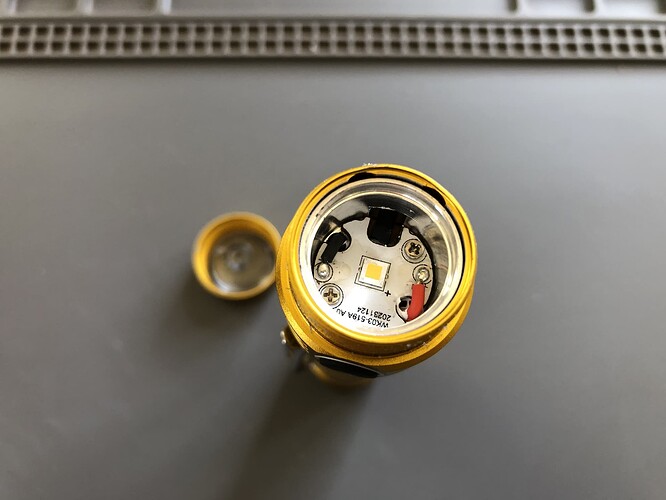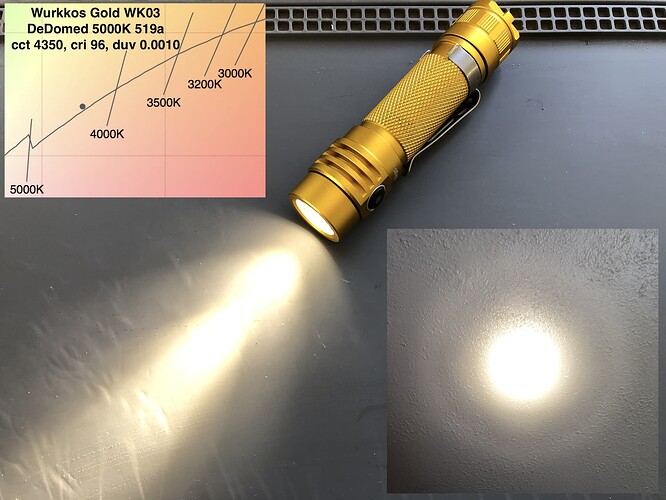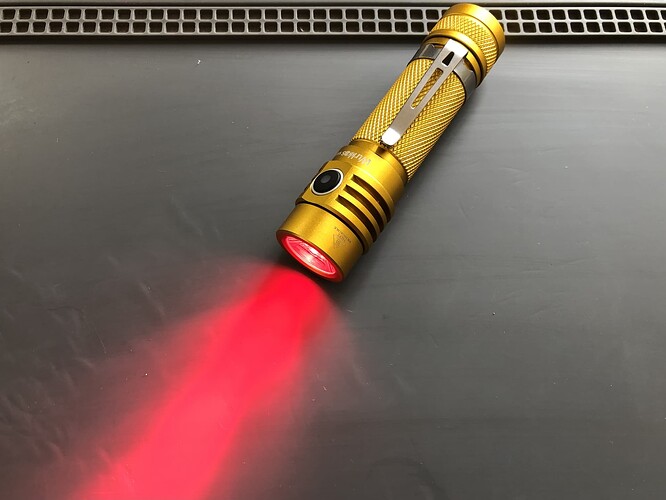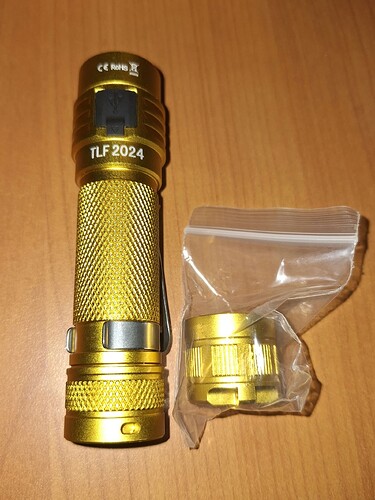For some years now, the Wurkkos WK03 has been one of Wurkkos’ most affordable entry-level flashlights. Costs were saved in many places in order to offer an inexpensive flashlight. However, it is by no means a “cheap” flashlight.
Recently the WK03 was released in a special edition with a few small changes and improvements, the “gold” edition.
You can find the German version of this review on my website: SammysHP Blog › Wurkkos WK03 „Gold“
The flashlight was provided by the manufacturer for this review. Thank you very much!
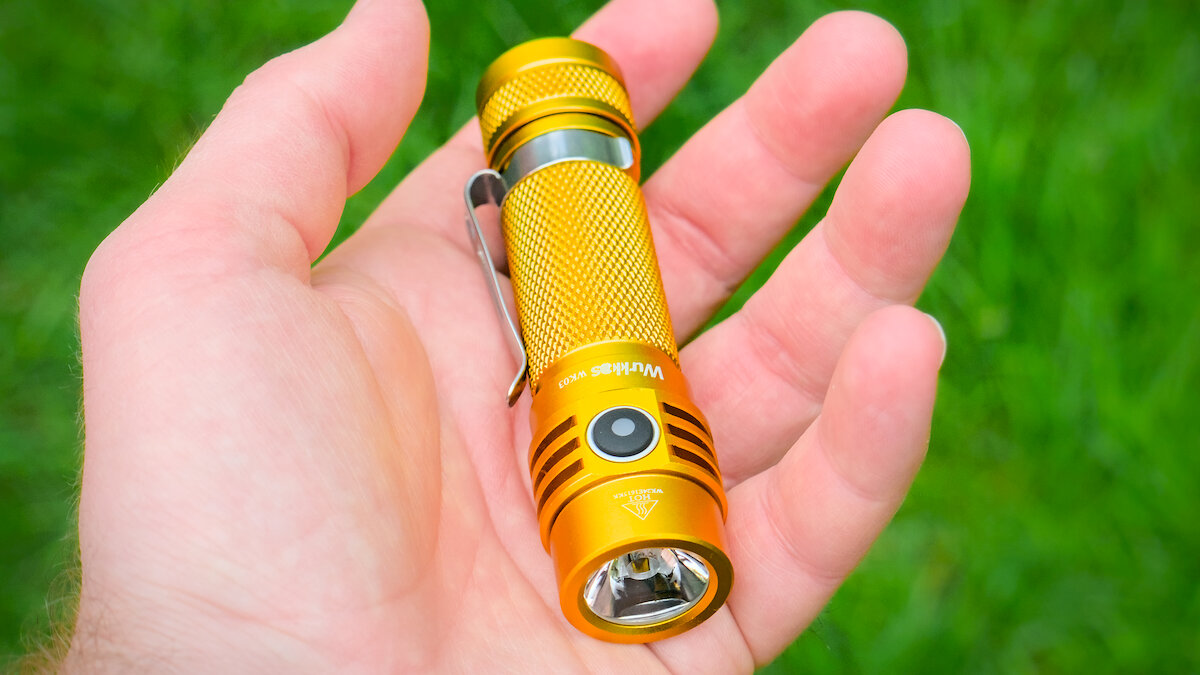
Overview of hardware
Short introduction: The WK03 was originally released in 2022 in black with a Luminus SST-40. In early 2024 it was updated as a special edition for the German Taschenlampen-Forum. Golden color, “TLF 2024” engraving and a Nichia 519A. It was so popular, that Wurkkos decided to keep it as a regular version (without the engraving).
- Wurkkos 18650 Li-ion battery with 3000 mAh (unprotected, button-top, 3.89 V at arrival)
- Lanyard
- Clip (already attached)
- Extra tailcap with magnet
- 2x replacement o-ring
- USB-C charging cable
- Manual (EN, DE, CN, RU)
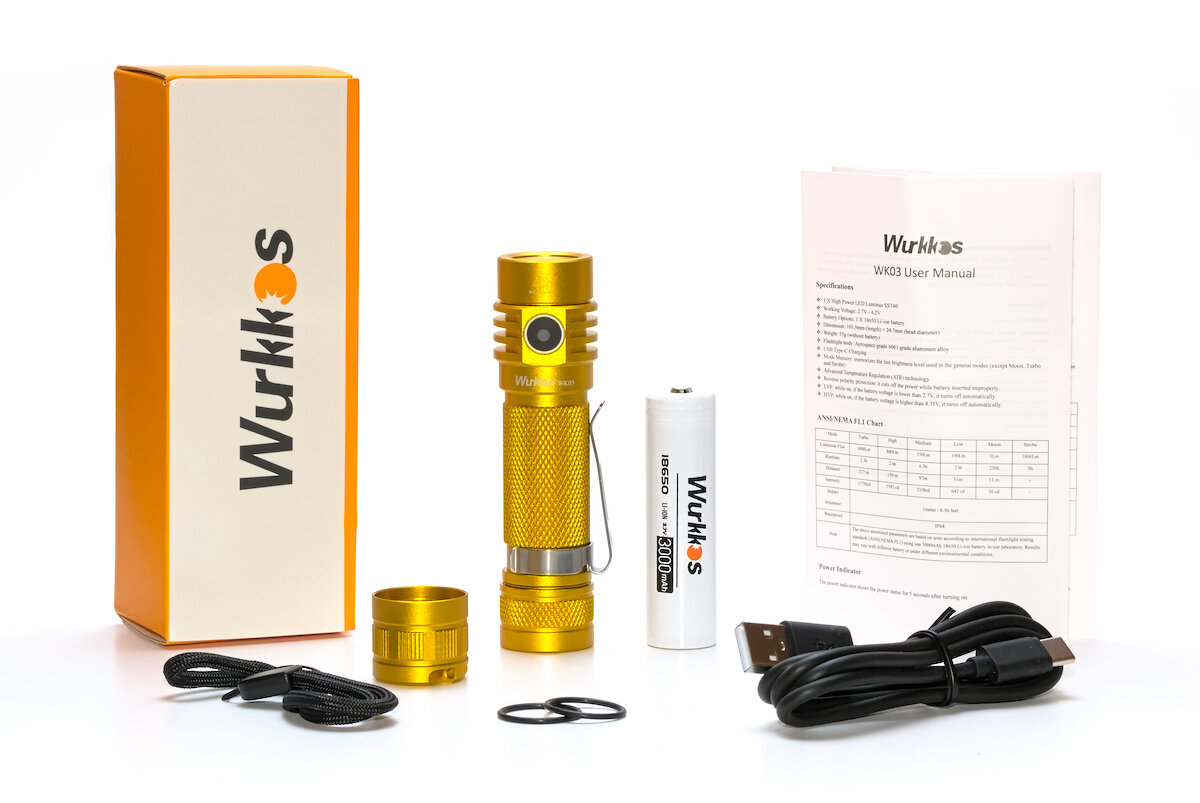
You’ll find many classic elements in its design. A few cooling fins on the head, diamond knurling on the battery tube and a simple clip. The “golden” (or yellow) anodization is rarely found on flashlights.
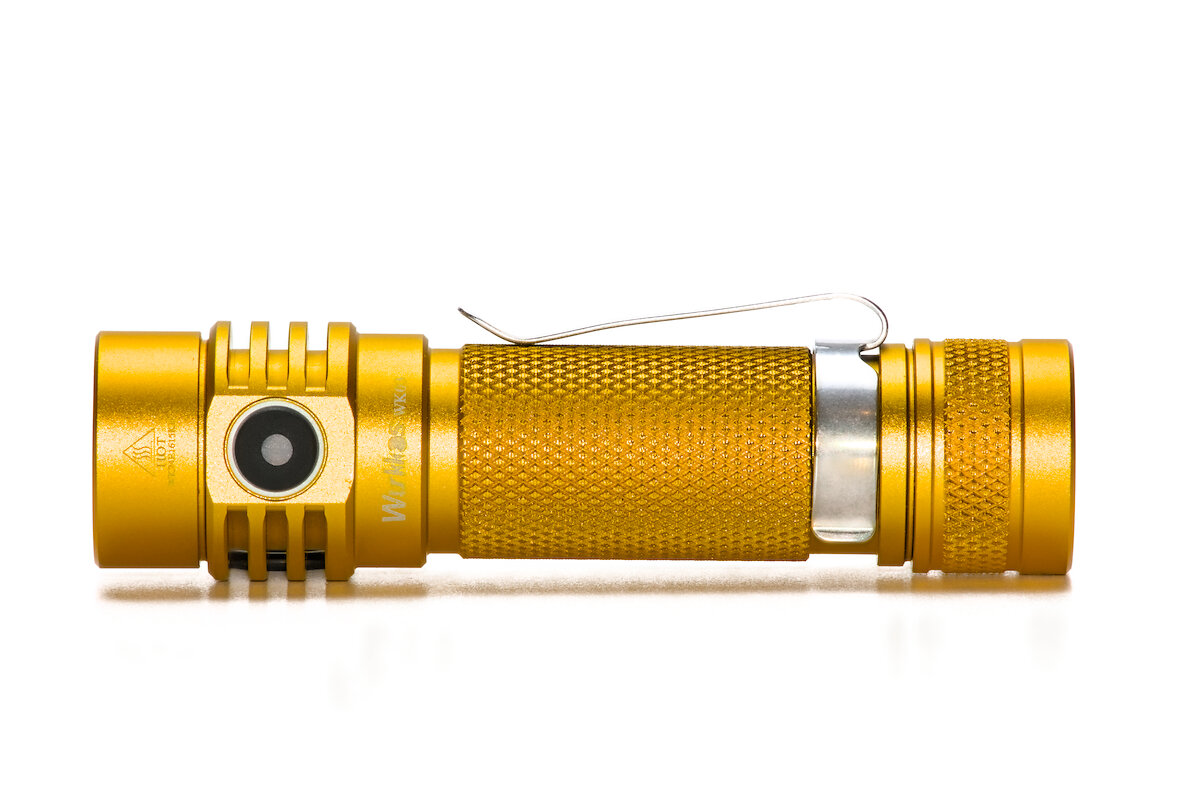
Plain bezel, just holding the TIR optic in place.
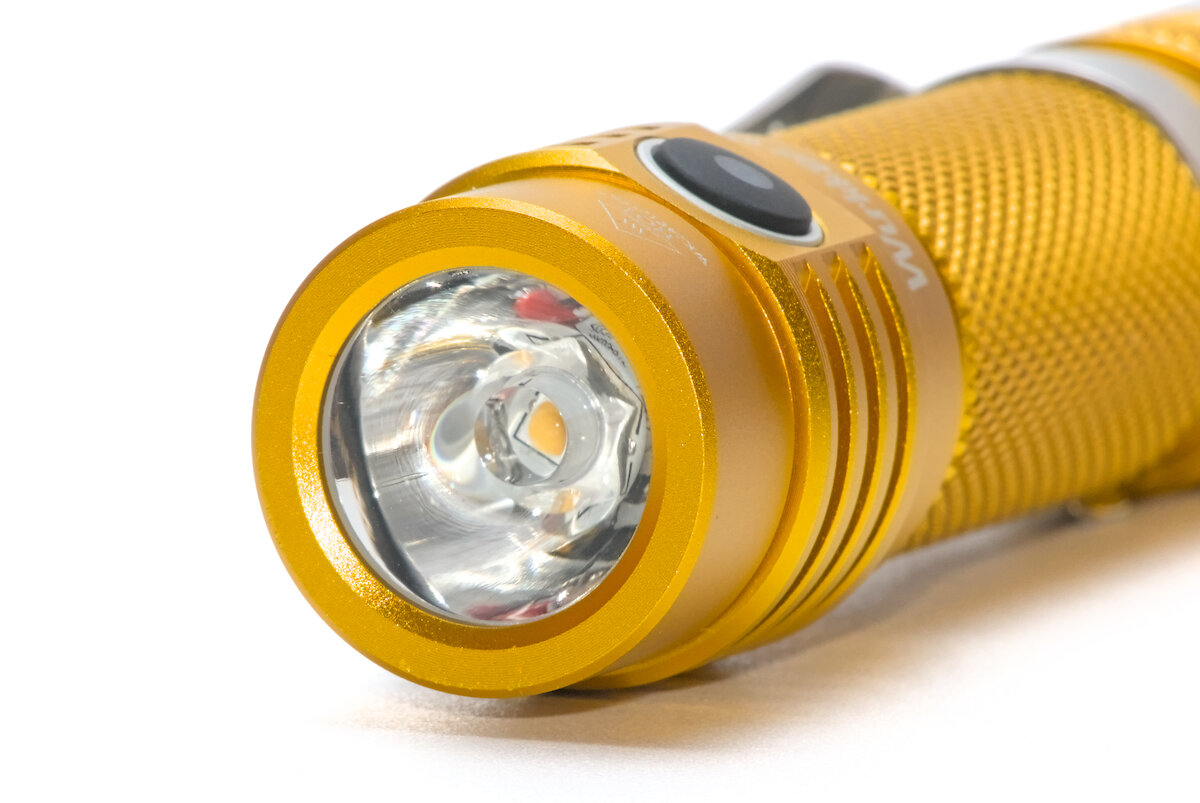
Length: 101.3 mm
Diameter (head): 27.0 mm
Diameter (battery tube): 22.5 mm
Diameter (tailcap): 24.5 mm
Weight (without battery): 51.9 g
Weight (18650 battery): 45.1 g
Weight (total): 97.0 g
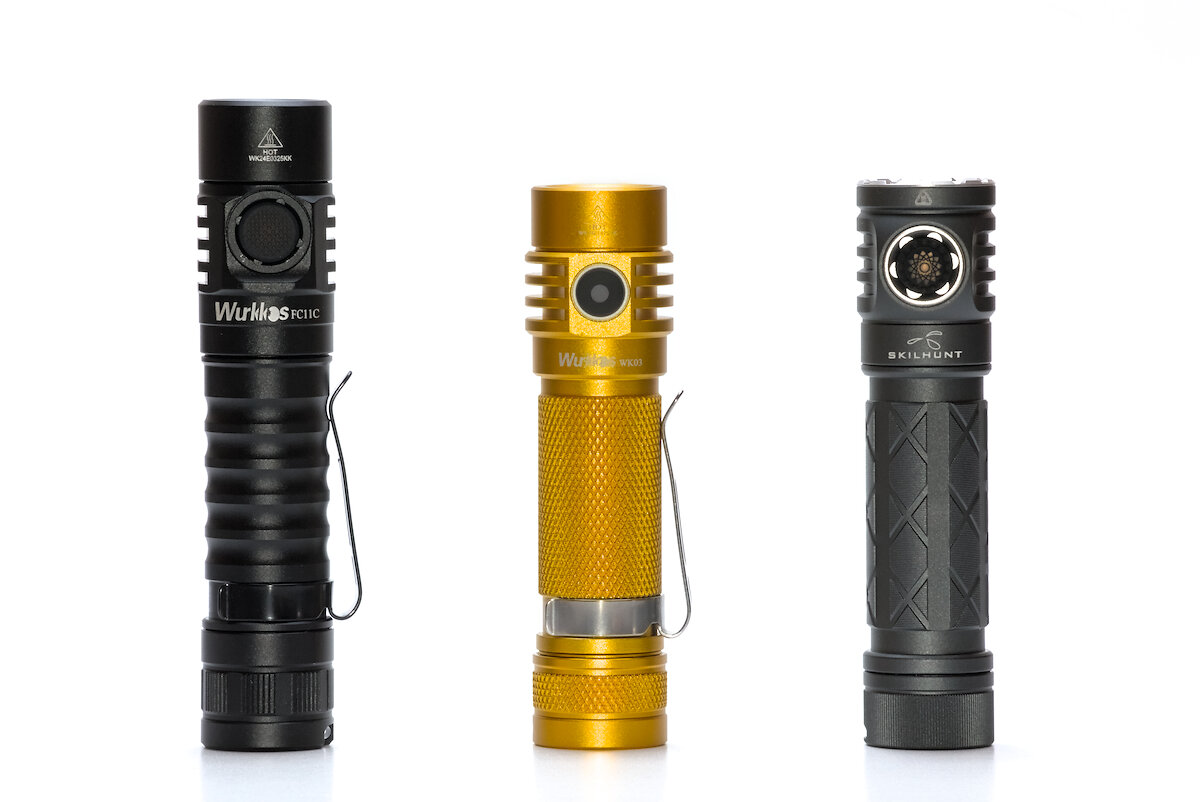
A hole in the tailcap allows you to attach a lanyard. However, the lanyard causes problems with tailstanding. The extra tailcap with magnet has a slightly different design and allows the flashlight to sit flat on the surface.
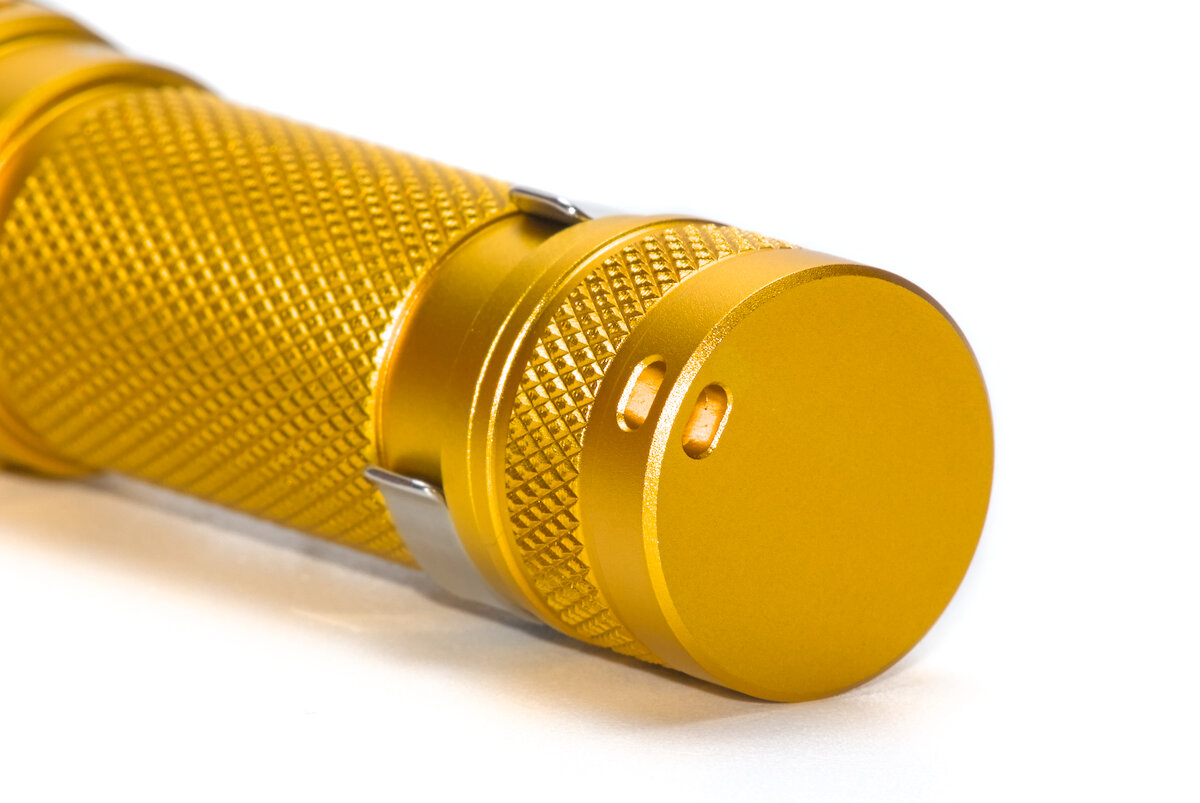
The battery can be charged directly in the flashlight via a USB-C port on the head.
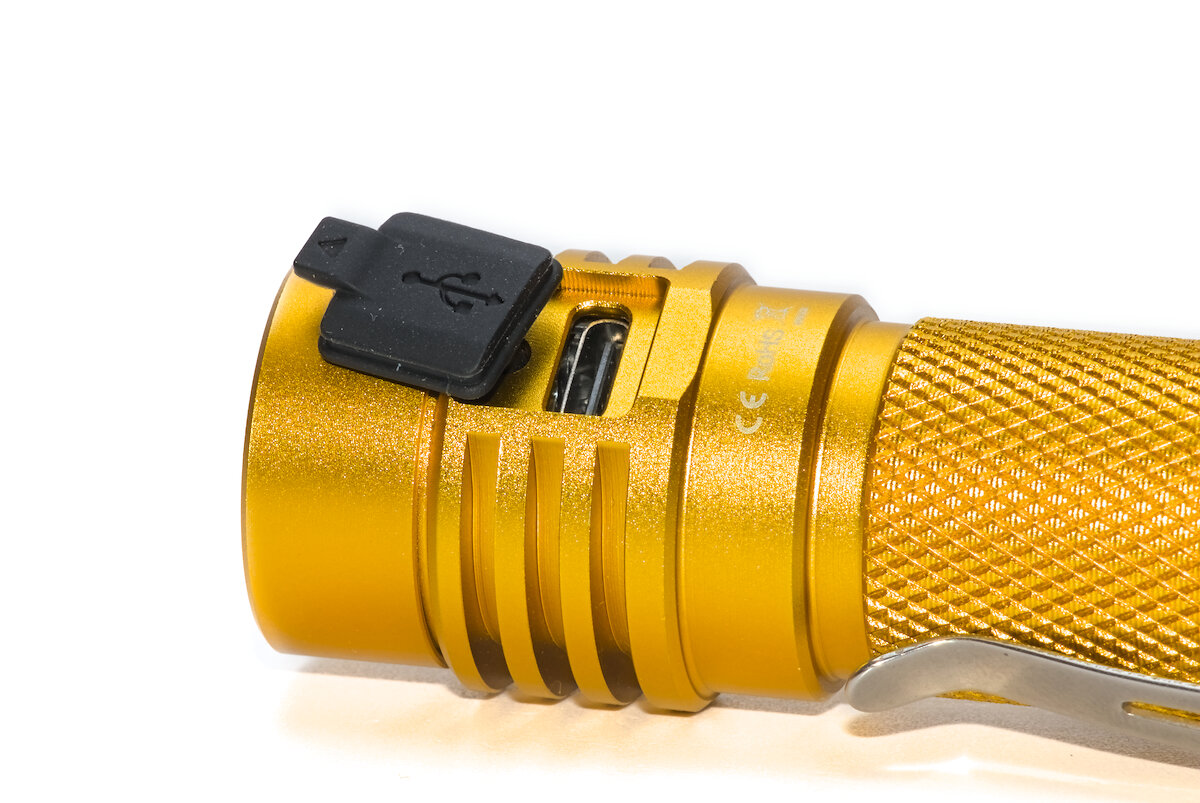
A silicone cover protects the port from water and dirt. A small flap helps with opening, but it might easily open accidentally. Cutting the flap off makes it more secure.
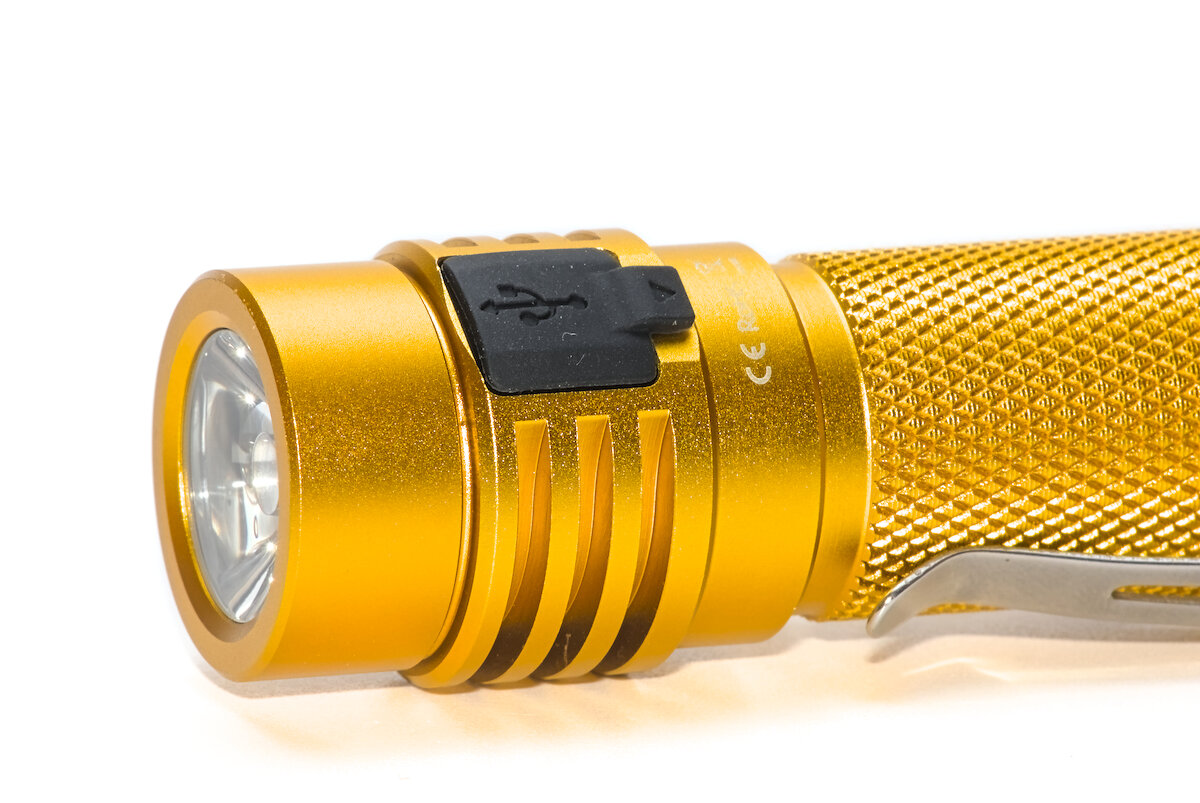
For full charging speed a USB power supply with 5 V and 1.6 A is sufficient. During charging the status LED in the switch blinks in red, on a full battery it lights up in green. During charging you can use the flashlight without limitations.
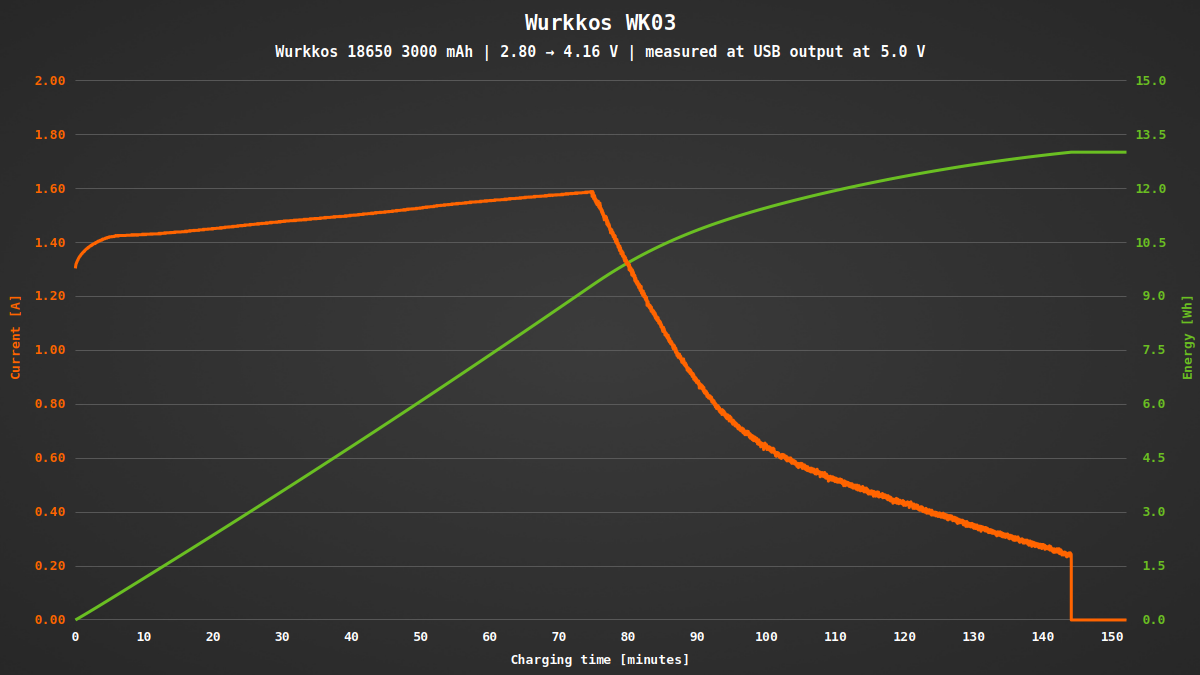
Nice threads on the tailcap. The head is glued to the battery tube, same for the bezel. The tailcap is sealed with a tailcap. The flashlight is rated as IPX8 (should survive at least one meter of depth under water).
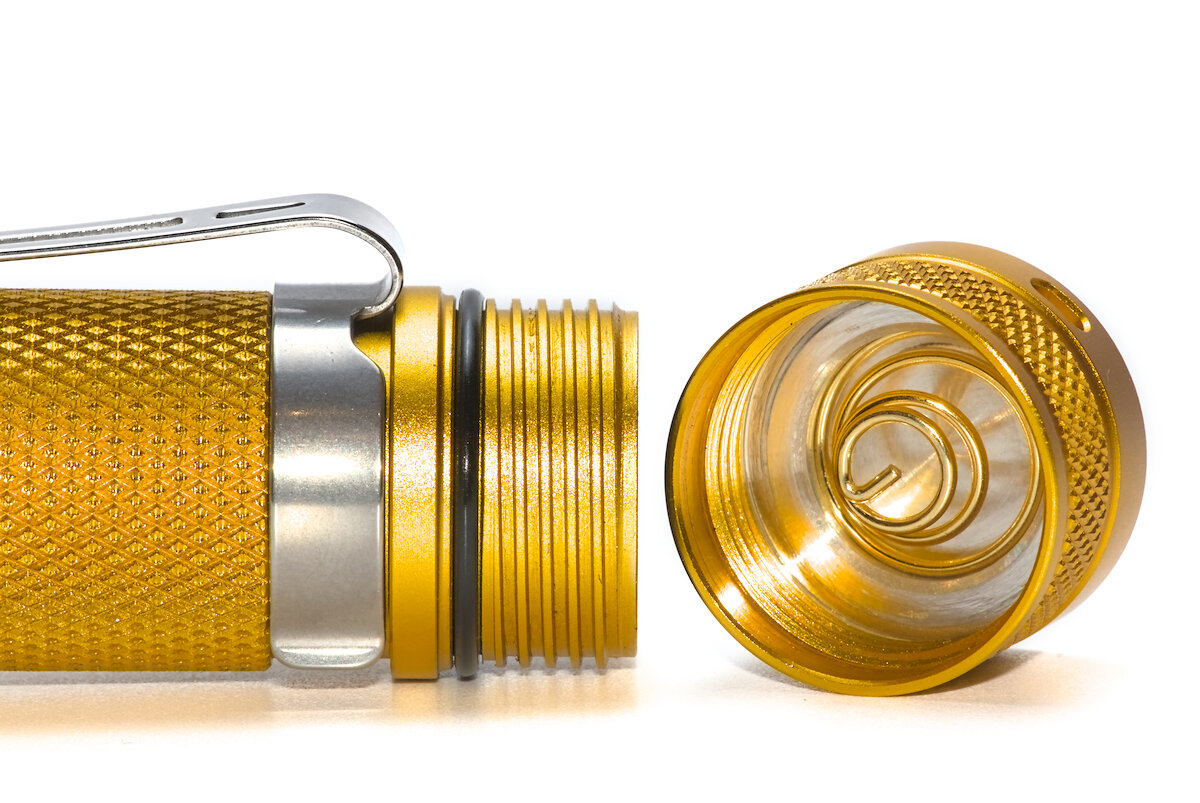
Strong springs in the tailcap and the head make it support all kinds of 18650 batteries (protected, unprotected, button- and flat-top).
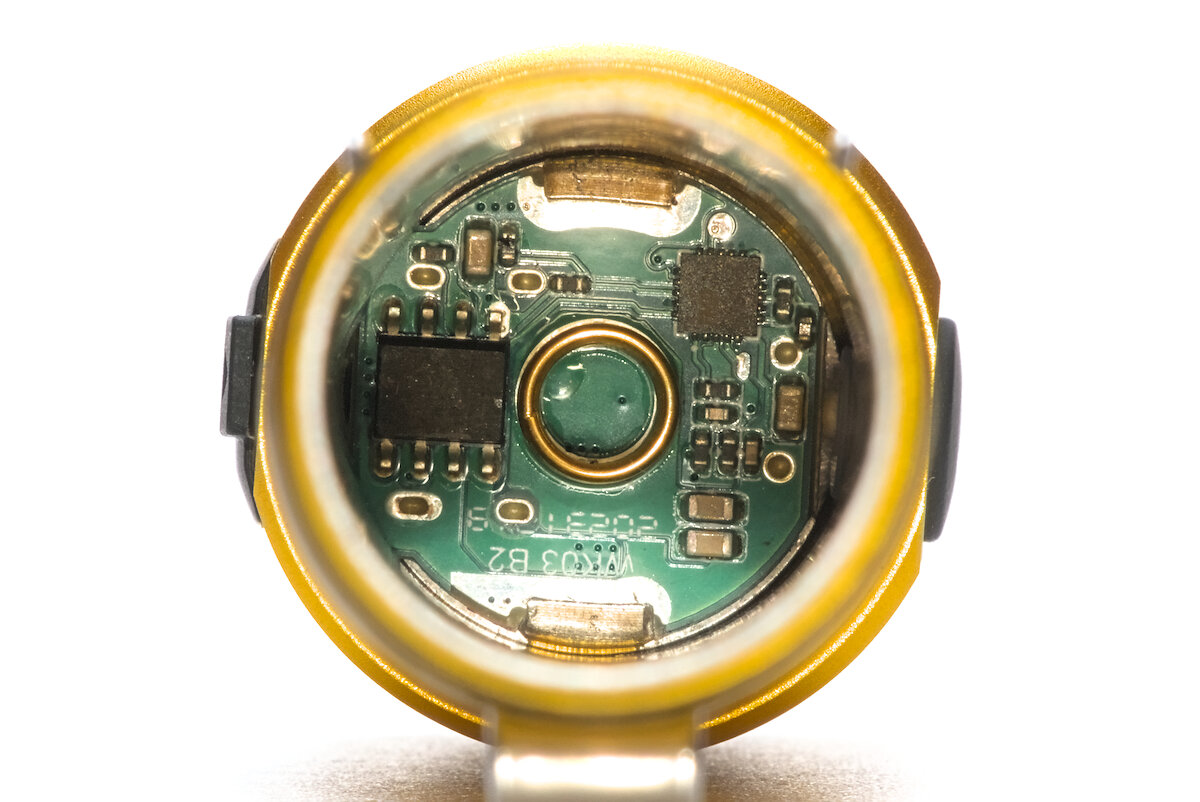
Manufacturing quality is good, except for the sharp cooling fins that you find on many flashlights.
User interface
The WK03 is operated via a small (8 mm) button on the head. It protrudes slightly, has short travel and needs little force to activate. Accidental activation seems pretty likely, so better lock out your light by pressing 4C or loosening the tailcap.
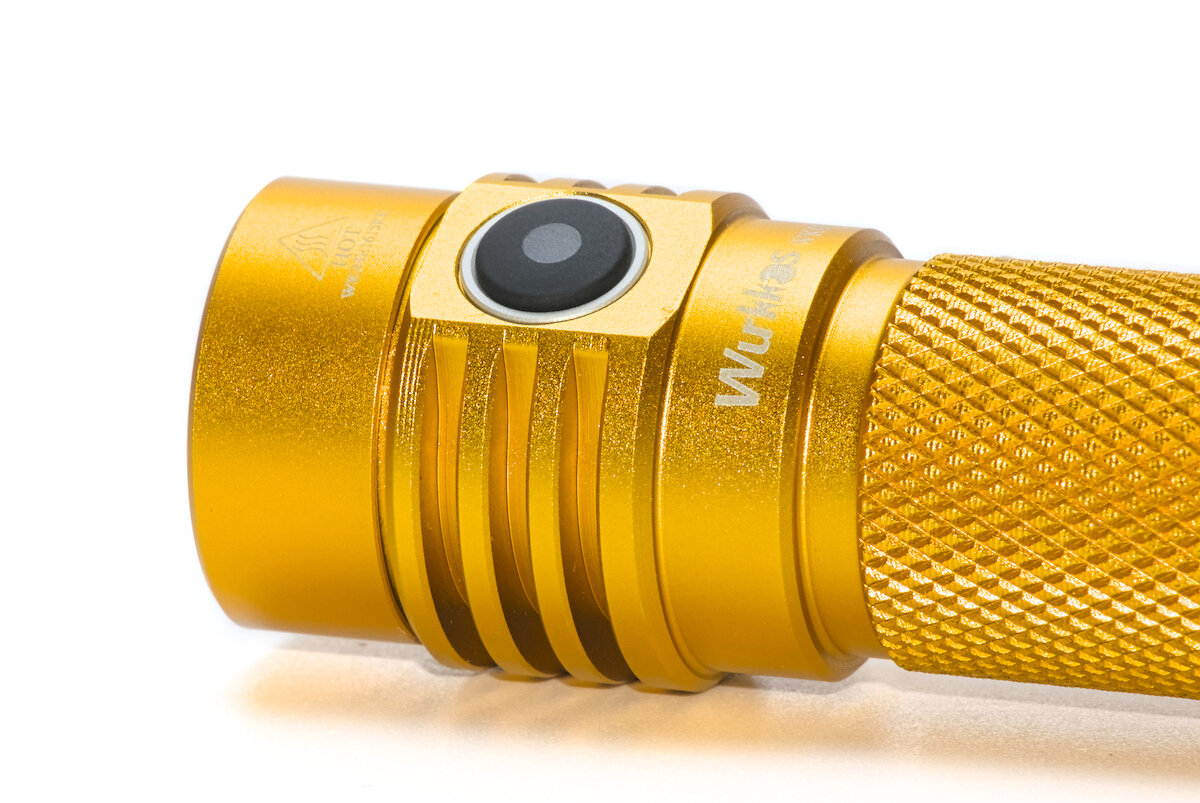
As expected from an entry-level flashlight, it has a simple user interface. Five levels of brightness, two of them – moon and turbo – directly accessible via shortcuts. It also has a strobe (14 Hz) and electronic lockout.
| State | Action | Function |
|---|---|---|
| Off | 1 click | Turn on (last used brightness, except Moon and Turbo) |
| Off | 2 click | Turbo |
| Off | 3 click | Strobe |
| Off | 4 click | Lockout |
| Off | Hold | Moon |
| On | 1 click | Turn off |
| On | 2 click | Turbo |
| On | 3 click | Strobe |
| On | Hold | Increase brightness (Low → Medium → High) |
| Turbo | 1 click | Previous brightness or turn off |
| Turbo | 3 click | Strobe |
| Strobe | 1 click | Previous brightness or turn off |
| Strobe | 2 click | Turbo |
| Lockout | 4 click | Unlock and turn on in last used brightness |
| Lockout | Hold | Momentary Moon |
An LED behind the switch indicates the approximate level of charge for five seconds after switching it on. If the battery voltage is low, the LED blinks red continuously when the flashlight is switched on.
| Color | State of charge |
|---|---|
| Green | good |
| Red | low |
| Red blinking | critical (< 3.0 V) |
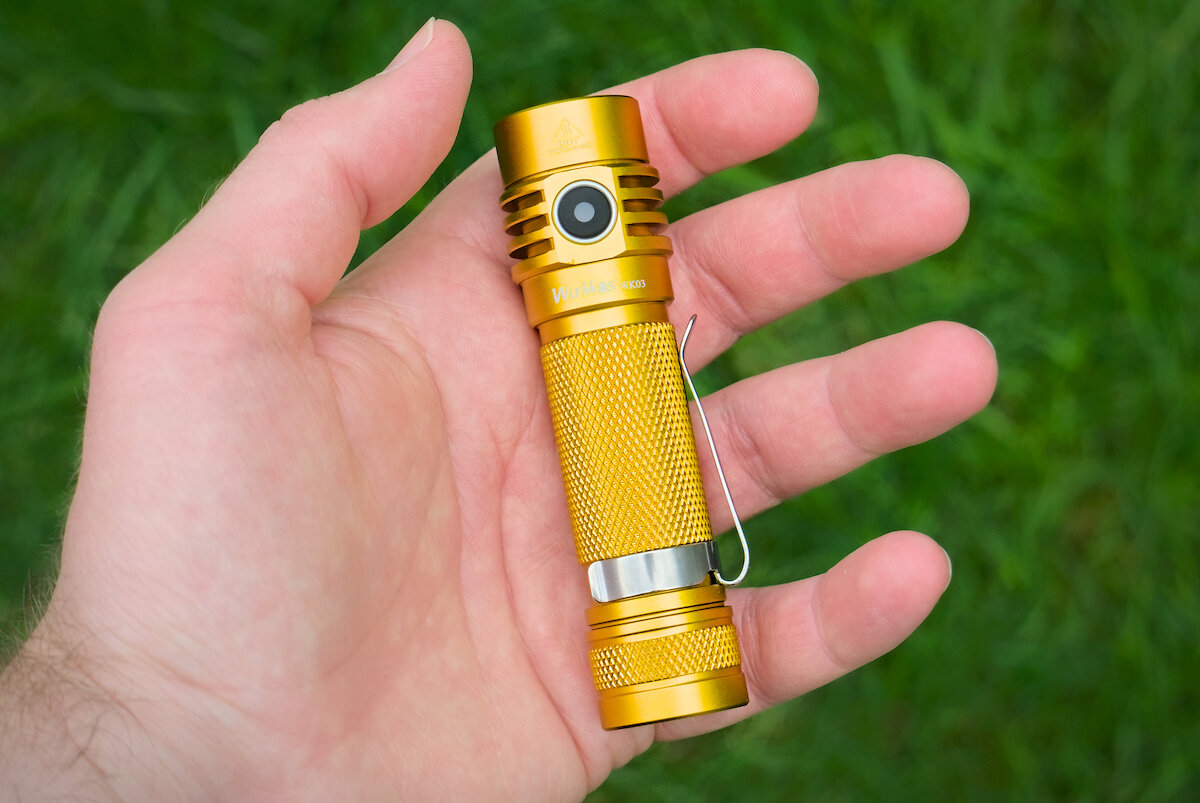
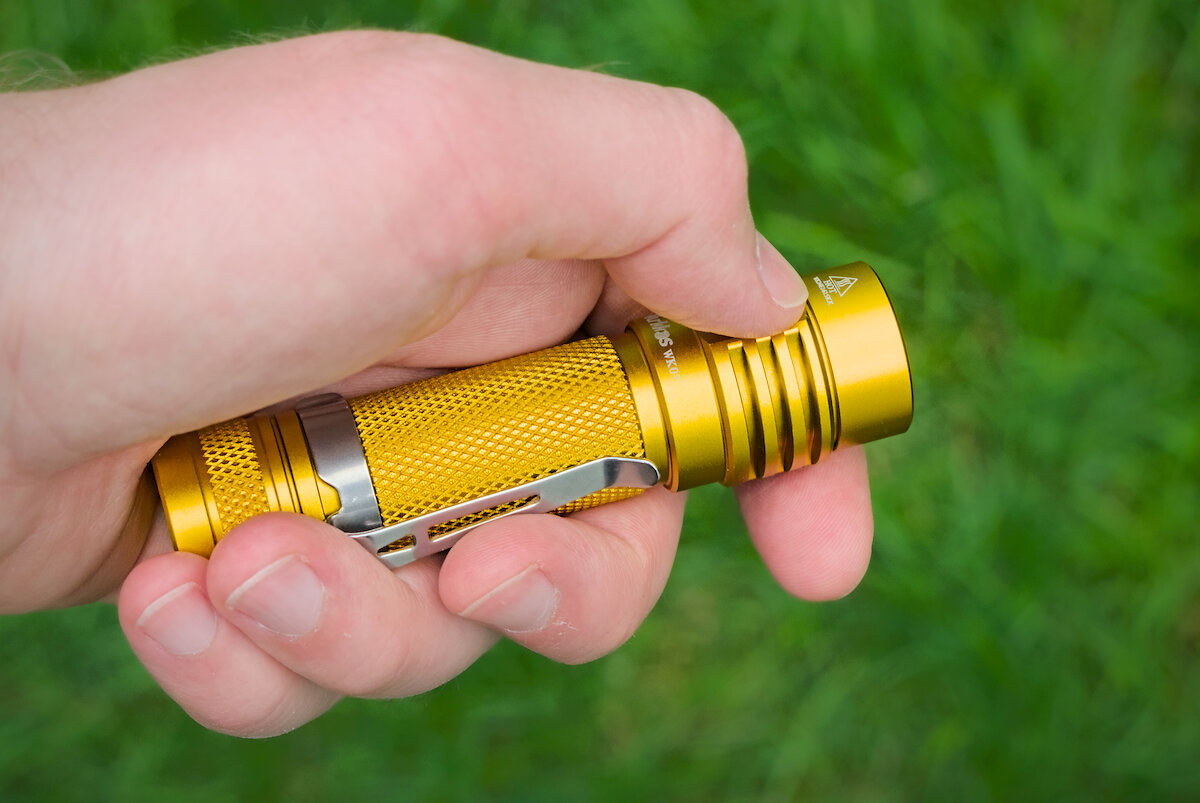
Illumination
The LED is a another upgrade of the golden edition: instead of a Luminus SST-40, it now uses a neutral white Nichia 519A in 5000 K. This LED also has pretty good CRI.
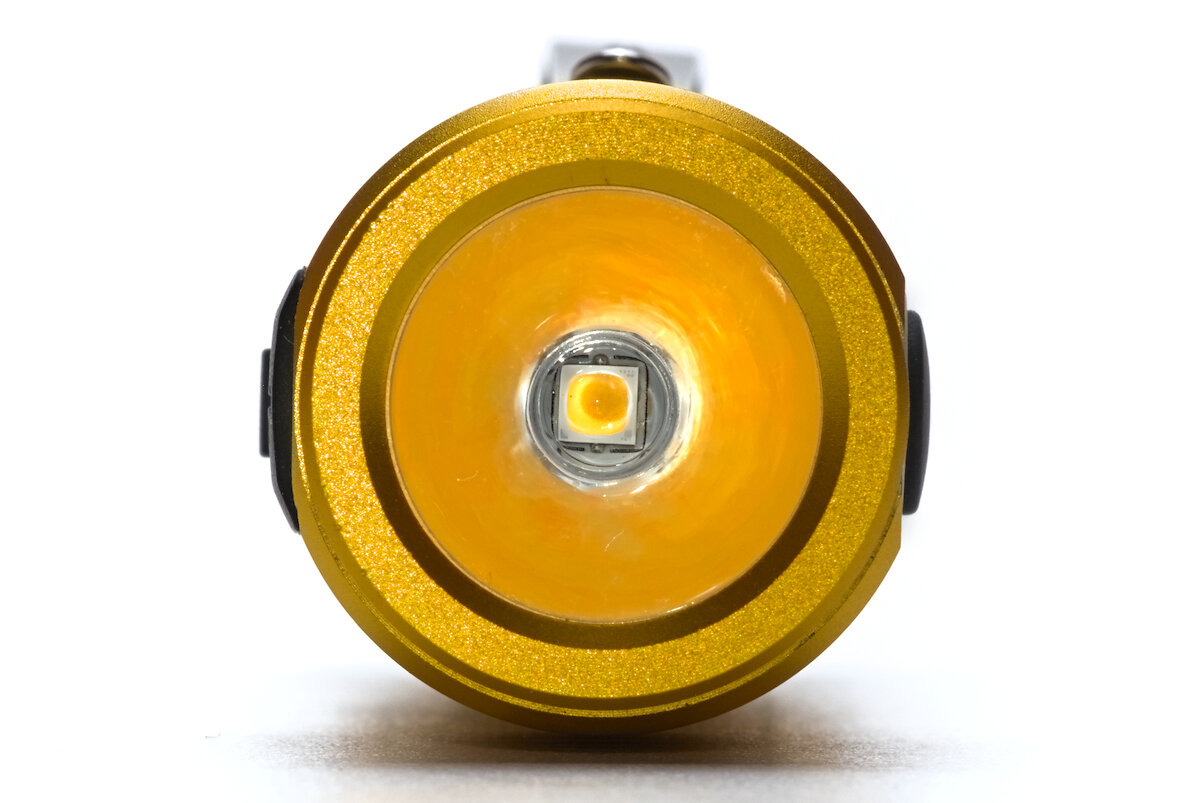
The TIR optic creates a surprisingly compact spot for a flashlight of this type. The corona around the spot has a slightly different color.
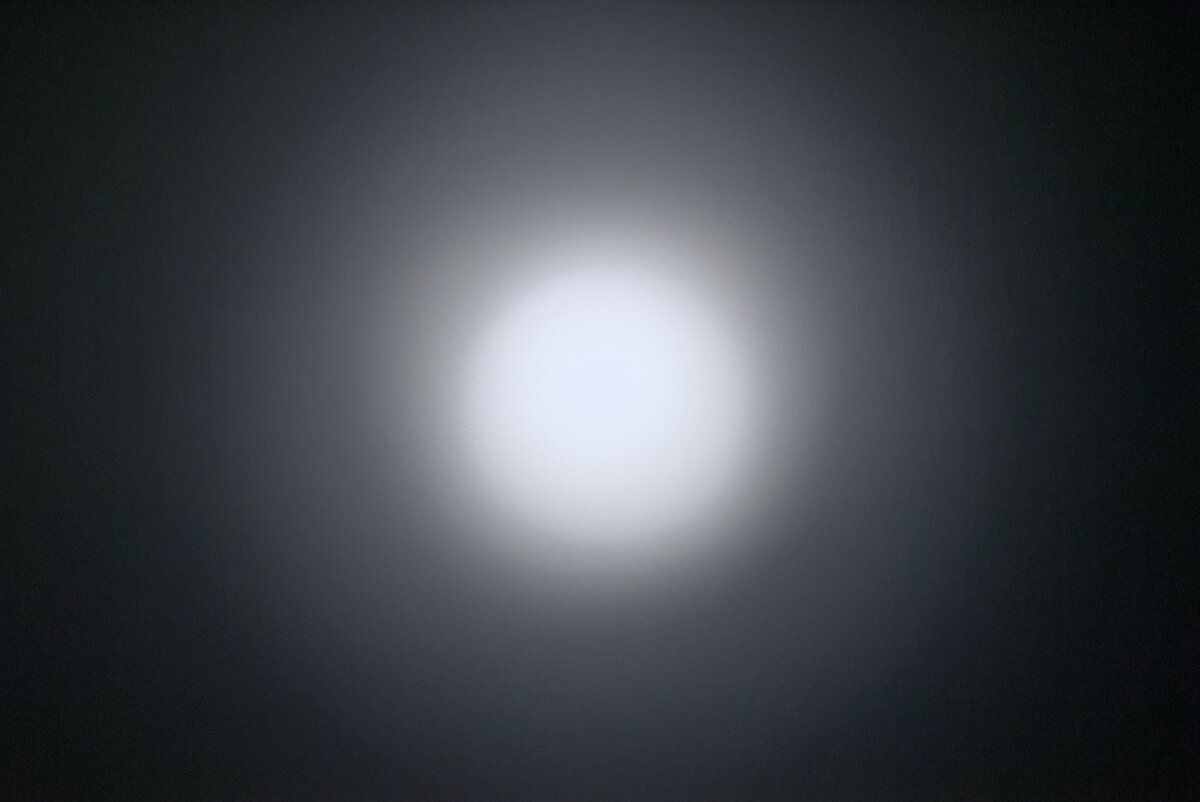
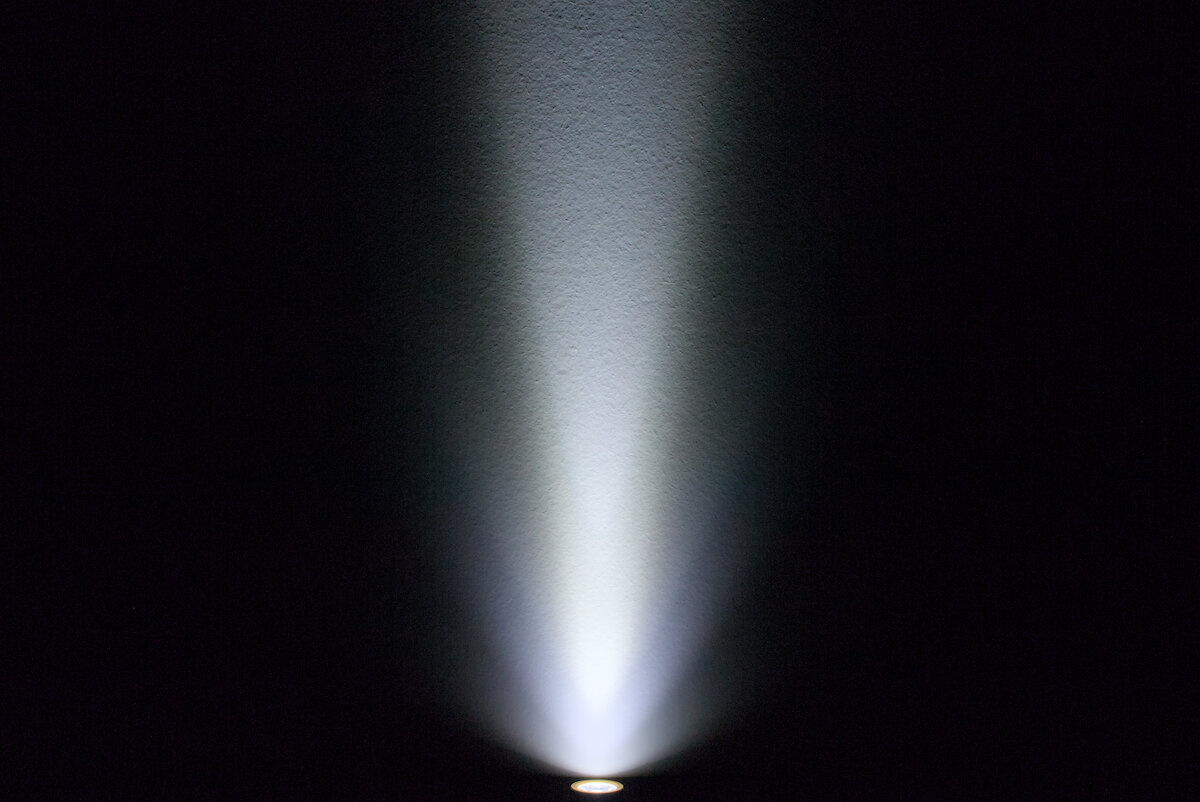
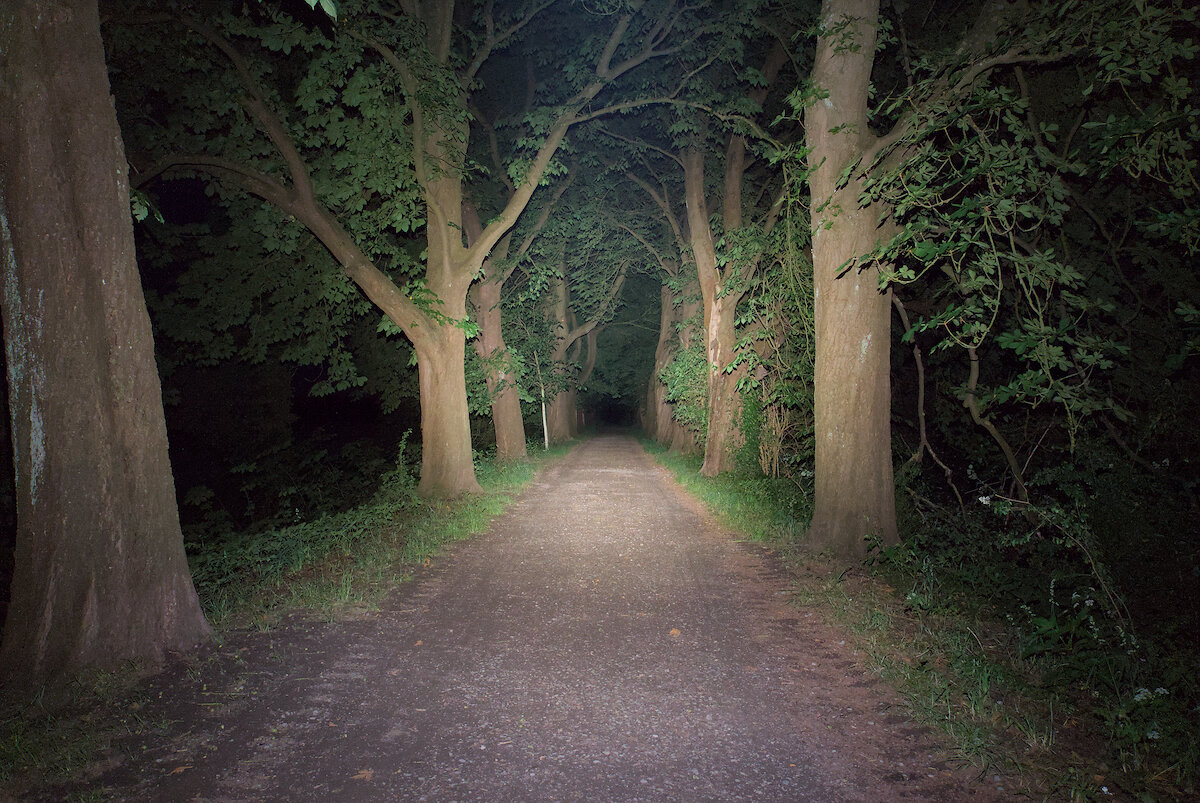
Dedoming doesn’t make it much better. The tint shift is reduced (and CCT drops to about 4000 K and becomes more rosy), but you’ll also get a few rings around the spot. A layer of d-c-fix might help (but will make it more floody).
Driver and runtime
While the original version of the WK03 was supposed to provide up to 1800 lm (as stated in the manual), the new version with Nichia 519A only provides 1200 lm according to the manufacturer. This is acceptable considering the better light quality.
| Mode | Brightness¹ | Runtime¹ | Intensity¹ (Throw²) | Current³ |
|---|---|---|---|---|
| Turbo | 1200 lm | 2:12 h | 9450 cd (194 m) | 3.60 A |
| High | 500 lm | 2:30 h | 3700 cd (121 m) | 1.37 A |
| Medium | 150 lm | 9:30 h | 1605 cd (80 m) | 0.45 A |
| Low | 15 lm | 25 h | 425 cd (41 m) | 0.06 A |
| Moon | 2 lm | 280 h | 17 cd (8 m) | 0.02 A |
| Off | 4 µA |
¹ According to manufacturer ² ANSI FL1 ³ Measured
In turbo mode the brightness is reduced after one minute. The head reaches a temperature of around 38 °C with slight cooling. Turbo and high are practically identical afterwards. The claimed runtime does not match my measurements. In fact, the flashlight runs significantly longer, at least at the levels I measured.
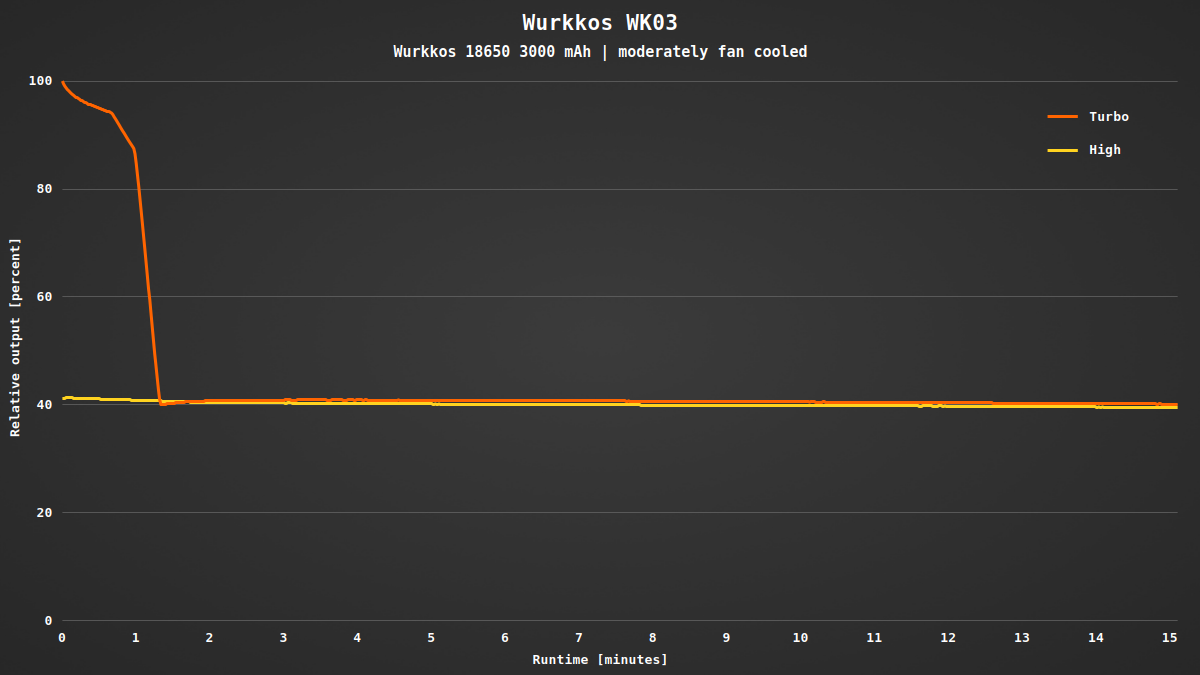
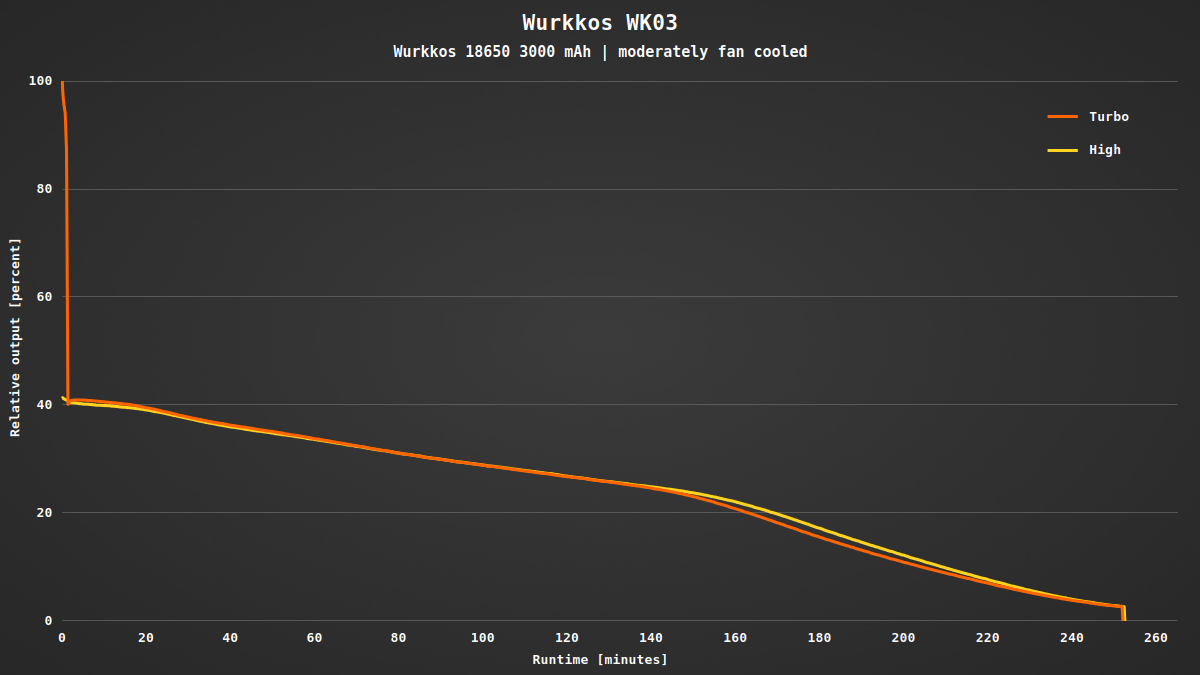
It is not surprising that the driver is also kept inexpensive for an inexpensive flashlight: a simple FET driver with direct-drive. The brightness is regulated by PWM at around 21 kHz. Even in turbo mode, presumably to avoid damaging the LED in direct-drive operation. The disadvantage – as you can clearly see in the runtime charts – is the gradual decrease in brightness as the battery is discharged. But such a driver is not uncommon, even with significantly more expensive flashlights.
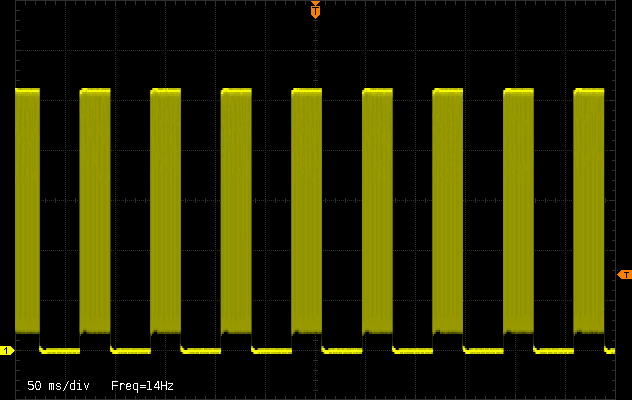
Strobe with PWM
Below a battery voltage of 3.00 V the button blinks red while the flashlight is switched on. If the battery voltage drops below 2.70 V, the flashlight switches off to protect the battery from deep discharge.
Conclusion
The Wurkkos WK03 is a great entry-level flashlight if you don’t have too high expectations. Costs were saved in some places, but overall it is by no means a “cheap” flashlight. The special “Gold” edition offers some improvements, such as the significantly better Nichia 519A LED or the extra tailcap with magnet.
Got curious? Get the Wurkkos WK03 Gold edition on Amazon US – save 20% with the code “NFSYVKYH”.
